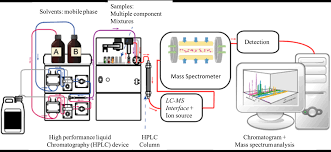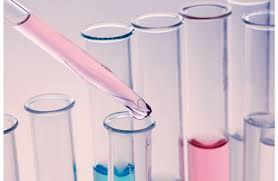LC-MS Analysis: A Powerful Technique for Separating and Identifying Chemicals
Liquid Chromatography-Mass Spectrometry (LC-MS) is an analytical technique that combines two powerful tools:
- Liquid Chromatography (LC) separates the components of a sample based on their chemical properties.
- Mass Spectrometry (MS) identifies individual components by their mass-to-charge ratio (m/z).
The combined power of LC and MS gives LC-MS unparalleled analytical prowess. Here's a closer look at the LC-MS process:
- Sample Prep: The journey begins with preparing the sample. Imagine preparing the runners for the race – ensuring a fair competition. This might involve dissolving the sample and potentially removing unwanted interferences.
- Liquid Chromatography: The prepared sample is injected into the LC system. The components, like our runners, race through a column packed with a special stationary phase. Their interactions with this phase determine their separation. Slower runners (strongly interacting components) lag behind, while faster runners (weakly interacting components) emerge first.
- Ionization: Emerging from the LC column, the separated components are transformed into electrically charged ions.
- Mass Analysis: The charged ions enter the MS, where a magnetic field acts as the sorting mechanism. Based on their mass-to-charge ratio, ions are separated and detected. Imagine the runners crossing a finish line with detectors recording their unique identification numbers.
- Detection: Finally, the detector measures the abundance of each ion, providing quantitative information about the components present. We now know not only who the runners are, but also how many participated from each group.

This powerful technique boasts a vast array of applications:
- Unveiling the Unknown: LC-MS can identify unknown compounds within a mixture, like a detective identifying suspects at a crime scene.
- Quantifying the Mix: It can determine the exact amount of a specific component present, crucial for tasks like measuring drug concentrations in the body.
- Metabolomic Marvel: It can identify the breakdown products of chemicals, aiding in drug development and understanding the body's processing mechanisms.
- Protein Powerhouse: LC-MS is a key tool in protein identification, unlocking the secrets of complex biological systems.
- Food Sleuth: It can detect contaminants or adulterants in food, ensuring consumer safety.
- Environmental Guardian: LC-MS plays a vital role in identifying pollutants in air, water, and soil, aiding in environmental protection efforts.
